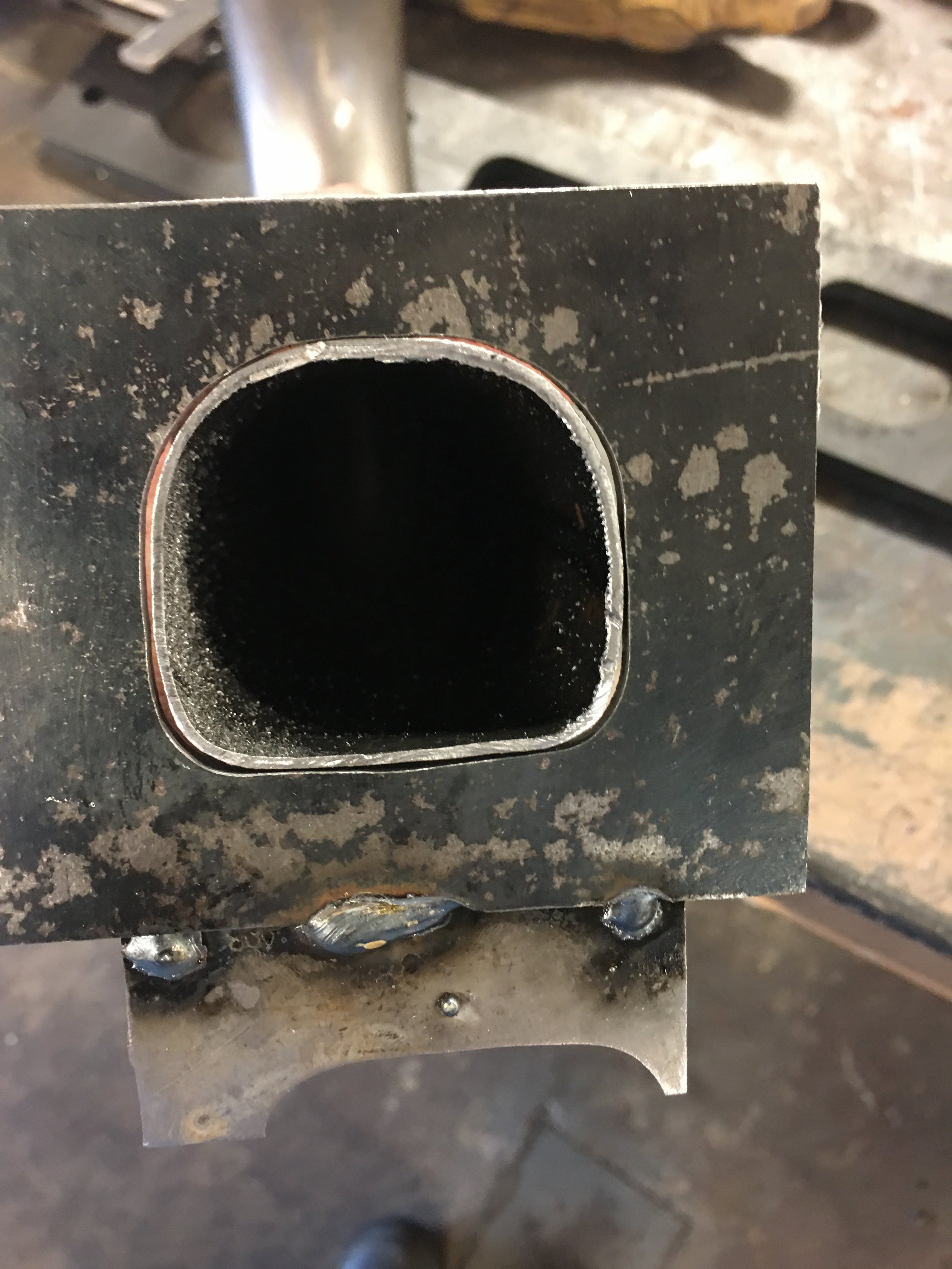Joe Header: Part 2. The saga continues.
I have round tubes and D shaped ports. Sonuvabitch.
I had read a metal shaping book from Ron Fournier decades ago. The book had a section about building headers. It gave me an idea on how to shape the pipe end to match the flange ports. I’m not sure the same technique would work for me though.
Hit the internet for ideas and came across a Youtube video where a guy is building a one off set of headers and he needed to form one end into a D shape. Unlike the books idea of using a plug of steel formed into the desired shape to be hammered into the end of the pipe to force the round pipe end into the shape intended, this guy has built a two piece die that is put into a vice which supplies the force to squeeze the pipe into shape.
The die in the Youtube video is so much cleaner. That guy has a friend with a real CNC machine shop and was able to make the die out of stainless steel.
I went looking for this video on Youtube and couldn’t find it. I then remembered that I sent the link to a couple of friends a couple of years ago. I found the email and the link. The clip has been removed. Bummer.
I’m a hack and the best I could do is an assortment of hole saws and a high speed die grinder. I did my best to recreate the die I saw. It’s crude and not symmetrical but it does the job it was built for.
Prior to making the die, which is two pieces, I wanted to make two complete forms and then cut them up to make one working die. To improve my chances of carving two templates of near identical size and shape, I made a master template.
This master template would also work as my go/no-go gauge to test the newly formed pipes .
I get tunnel vision sometimes. When I started off, all I could see was a D shaped opening where I had to fit a round pipe. I learned that I was looking to create what is known as a starter tube. After achieving that goal my field of view expanded and I noticed that the flange ports were nearly the same size as the exhaust port on the head. By fitting the starter tube into the flange, this would shrink the opening a bit creating a small restriction. I’m not saying this would defeat the purpose of running a header but C’mon. Since I’m here, why not make things a little better, ya know? After a little brow scrunching, some pseudo logic and a lot of, “because I want to, that’s why”. I decided to widen the openings to not only be able to clear the pipes but to make a slight step down from the exhaust port into the header.
The header primary opening will be bigger than the exhaust port.






